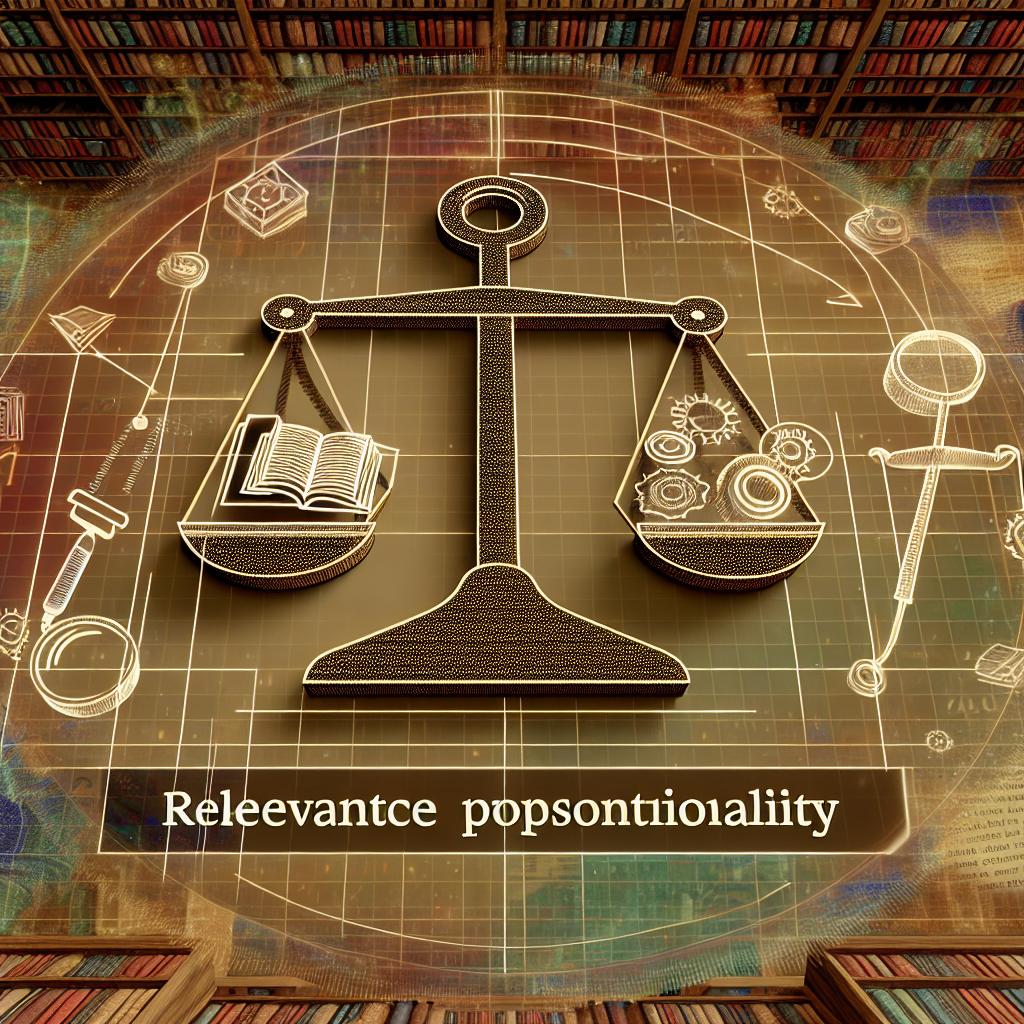Understanding Relevance and Proportionality in Discovery
In legal proceedings, the process of discovery represents a crucial phase. During this process, the parties involved exchange information and evidence that hold significance for the resolution of the case. Discovery serves as the foundation for a fair trial, enabling both parties to understand the facts and build their respective arguments. Two fundamental concepts in this domain are relevance and proportionality. These principles are in place to ensure that the information sought and disclosed is necessary and that the effort and resources expended in obtaining it are warranted.
Relevance in Discovery
Relevance is a straightforward yet critical concept within the context of discovery. It pertains to the necessity that the information or documents requested be directly related to the claims or defenses forming the litigation’s basis. The information sought must have the potential to influence the case’s outcome and aid in establishing crucial facts or evidence. The determination of relevance relies on guidelines and rules established by the court, which play a pivotal role in shaping the discovery phase’s scope.
Assessing Relevance
Courts tend to interpret relevance broadly. This approach allows parties access to information that might not directly affirm or negate a contention but could lead to discovering evidence that might do so. This broad scope ensures that potentially vital information is not overlooked. At the same time, courts also delineate boundaries to prevent fishing expeditions, where parties might seek information without a specific intent, thereby consuming time and resources unnecessarily. This equilibrium helps maintain the integrity and efficiency of the discovery process.
Proportionality in Discovery
Proportionality serves as a vital balancing principle accompanying relevance in the discovery process. The essence of proportionality lies in ensuring that the scope of discovery is commensurate with the case’s needs. It considers the complexity of the case, its importance, and the resources available to each party. By applying proportionality, courts aim to prevent excessive and undue burdens or expenses during discovery.
Evaluating Proportionality
Several factors contribute to a comprehensive assessment of proportionality. These include, but are not limited to, the amount in controversy, which involves the stakes concerning the litigation and the resources each party has at its disposal. The ability of each party to obtain evidence through alternate means is another consideration, along with the overall financial and temporal resources available to the parties involved. Moreover, the significance of the issues at stake holds weight not just for the parties but also within the broader legal and public context. Through assessing these factors, courts tailor discovery orders that aim to ensure fairness and efficiency, minimizing unnecessary delays or costs.
The Role of Technology
Advancements in technology have significantly impacted the discovery process, especially concerning the management of electronically stored information (ESI). As digital data volumes continue to rise, technological tools play a crucial role in streamlining the discovery process. Specialized software and techniques like predictive coding aid in identifying relevant documents efficiently. These technological aids contribute to upholding proportionality norms by helping mitigate excessive costs associated with data review. Such innovations simplify the discovery process and enable both parties to focus their resources on the most pertinent aspects of the case.
The Judicial Perspective
Judges hold a pivotal position in moderating the discovery process through their discretionary power. They bear the responsibility of interpreting rules and resolving disputes concerning relevance and proportionality. In doing so, judges strive to maintain balance and equilibrium between allowing comprehensive case preparation and ensuring the judicious use of both judicial and party resources. Judicial oversight in discovery ensures that it remains aligned with the principles of fairness, justice, and efficiency.
Conclusion
The principles of relevance and proportionality remain indispensable pillars in the sphere of discovery. These concepts not only guide the scope and ambit of information exchange but also ensure that the discovery process remains comprehensive yet efficient. This alignment with judicial goals of fairness and justice helps enhance the quality of legal proceedings. By maintaining a proper balance between relevance and proportionality, legal professionals can ensure that the discovery phase significantly enhances case preparation, fosters efficiency, and ultimately supports the pursuit of justice.
